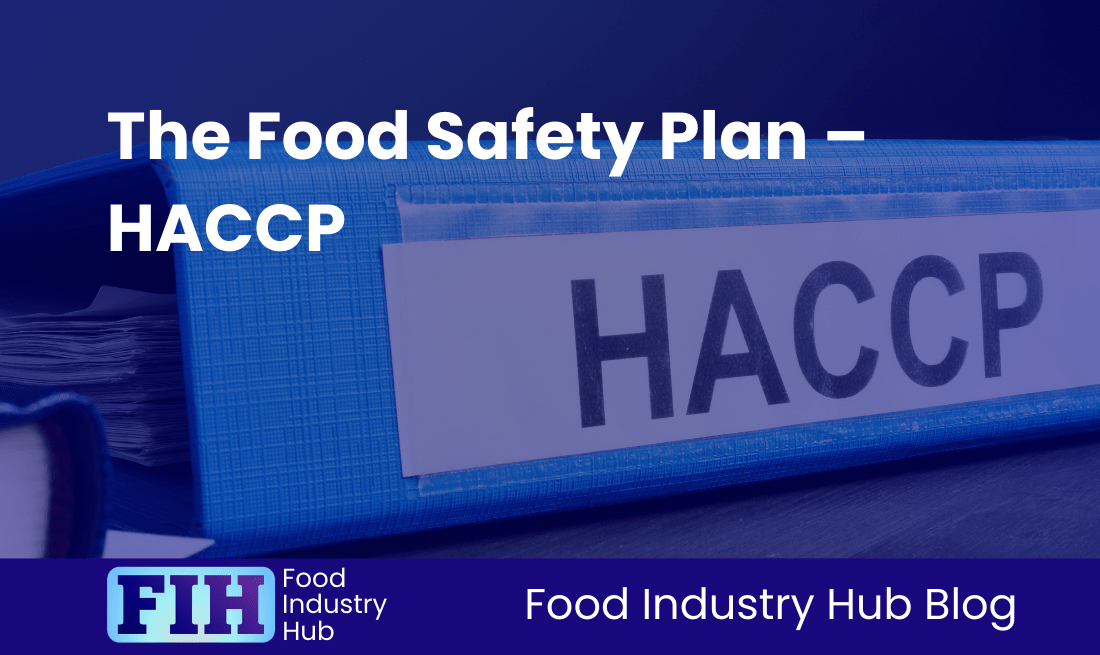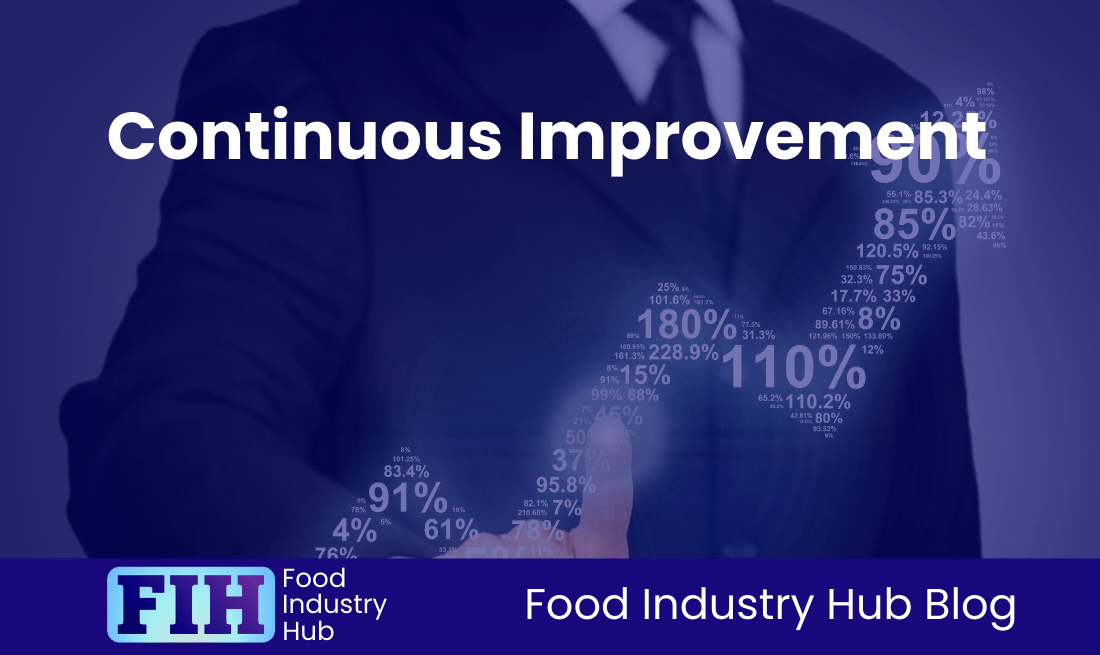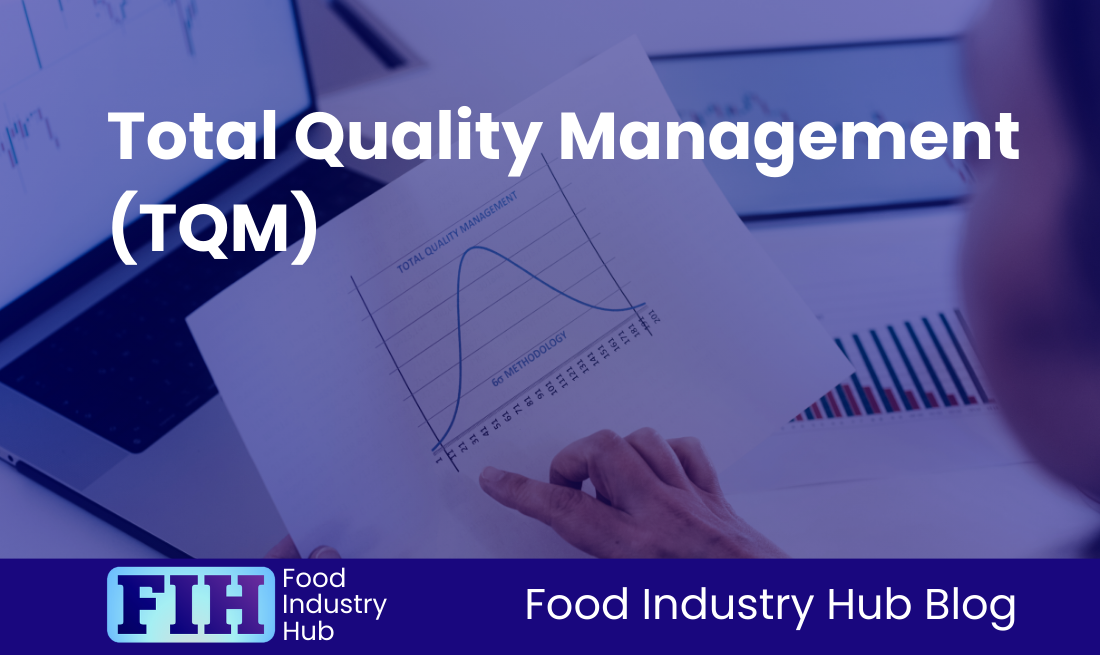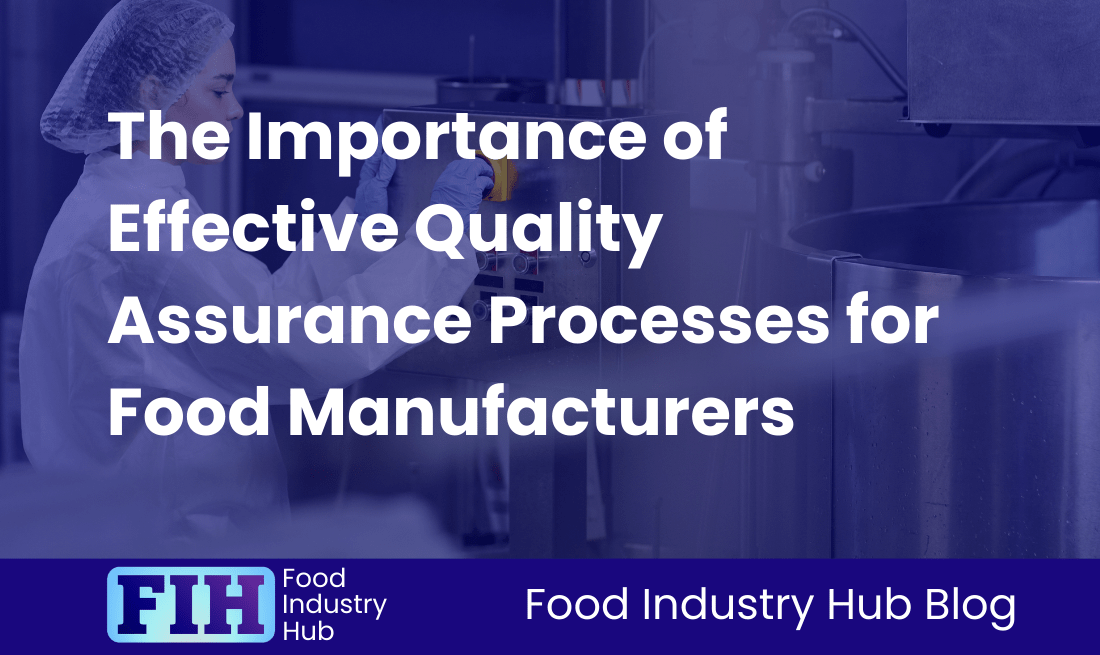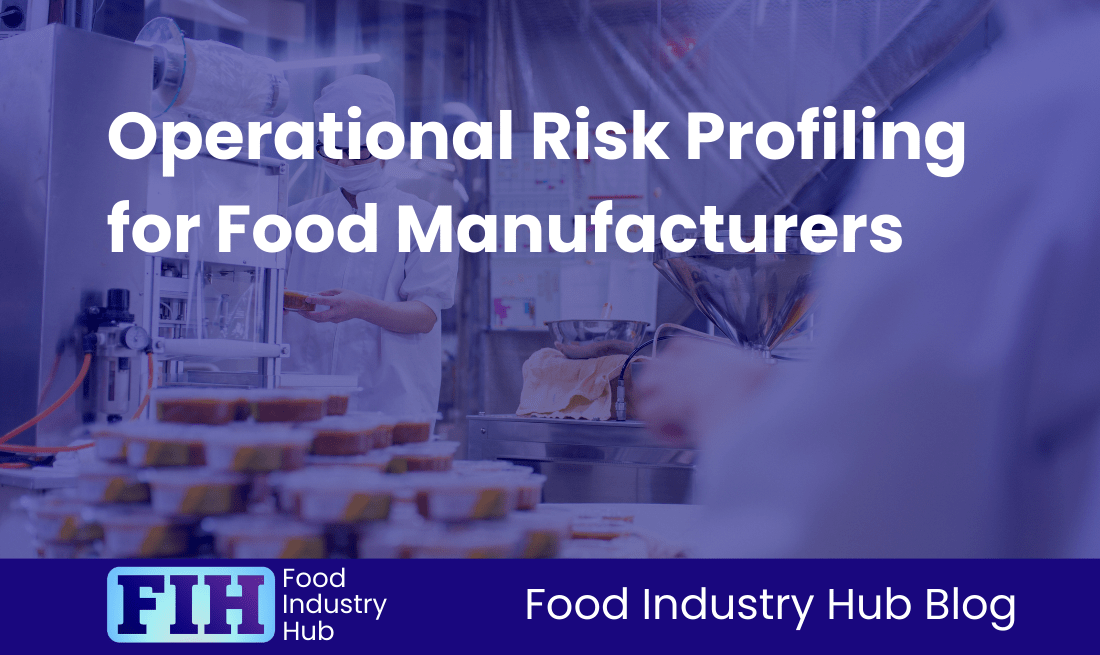Know: Failure Mode and Effects Analysis (FMEA)
Contents
Introduction
Key Takeaways
Fundamentals of FMEA in Food Manufacturing
Process Steps in FMEA
Integration with Food Safety Systems
Regulatory Compliance and Standards
Risk Assessment Methodologies
Implementation Strategies
Cross-functional Collaboration
Technological and Tool Support
Continuous Improvement and Monitoring
Conclusion
Introduction
The Failure Mode and Effects Analysis (FMEA) is a valuable tool for risk management in the food manufacturing industry, enabling companies to detect and mitigate potential failures in a proactive manner. This systematic approach plays a fundamental role in protecting the safety, quality, and dependability of food products by ensuring that risks are systematically scrutinised and addressed.
FMEA is an orderly process used to identify and evaluate possible failures within products, procedures, or systems. It lays emphasis on gauging the severity, occurrence, and detectability of these failures, facilitating organisations to prioritise their risk management actions effectively.
The significance of FMEA in food manufacturing is substantial. It enhances product safety and quality by revealing hidden risks that conventional safety plans might overlook. This thorough evaluation improves process reliability, decreases the probability of errors, and, ultimately, heightens customer satisfaction. Furthermore, by proactively tackling potential issues, FMEA helps to reduce costs linked with rework, recalls, and customer dissatisfaction, underlining its necessity in operational efficiency.
In the forthcoming sections, the article will uncover several central themes. Initially, we will outline the basic principles of FMEA in food manufacturing, touching upon the identification of potential failure modes, risk assessment approaches, and the creation of action plans to mitigate risks. Subsequently, we will investigate the interplay between FMEA and current food safety systems, underlining how this approach collaborates with conventional safety metrics to bolster comprehensive food safety management. Lastly, FMEA’s role in ensuring compliance with regulatory requirements and standards will be discussed, presenting how its implementation can demonstrate a proactive stance towards compliance, thus making audit processes less complex and building consumer trust.
Key Takeaways
Failure Mode and Effects Analysis (FMEA) is a cornerstone methodology in the food manufacturing sector that significantly bolsters food safety and quality. Its systematic approach allows for the effective identification of potential failure points. These insights empower food manufacturers to prioritise risk avoidance strategies proactively, a significant factor in ensuring consistent product quality and consumer safety. Utilising FMEA fosters enhanced safety measures in the food production process, it effectively curbs the risks associated with contamination and other safety concerns.
FMEA synergises with the HACCP Framework
The potent relationship between FMEA and the Hazard Analysis and Critical Control Points (HACCP) demonstrates the collective efficacy in food safety management. While HACCP’s target remains primarily specific food safety hazards, FMEA takes a more extensive view by addressing systemic process failures. This collaborative strategy improves risk management, generating a comprehensive safety procedure that focuses not only on critical control points but also mitigates wider operational vulnerabilities. This unified approach empowers manufacturers to approach food safety and quality control in a holistic manner.
Regulatory Compliance and FMEA
Adherence to regulatory standards is another area where FMEA proves exceptionally valuable. Particularly under the mandates of the Food Safety Modernization Act (FSMA), FMEA helps manufacturers identify and install necessary preventive controls. FMEA also documents potential failures and their preventative measures, providing essential records to meet compliance requirements and cement a proactive safety ethos.
Multidisciplinary Collaboration in FMEA
The success of FMEA deployment largely depends on the engagement of experts from various fields, such as quality assurance, microbiology, and production. This enriched collaboration allows for the incorporation of a diverse range of perspectives, leading to a more comprehensive evaluation of potential failure modes. Such teamwork enhances the accuracy of risk assessments and stimulates continuous feedback loops for ongoing improvement in the standards of food safety and quality.
Food Industry Hub Management Systems can significantly boost the effectiveness of your food safety and quality management system, leading to improved confidence and elevated quality assurance throughout your operations.
Fundamentals of FMEA in Food Manufacturing
The core of Failure Mode and Effects Analysis (FMEA) in food manufacturing lies in the proactive identification of potential failures in processes and product designs, assessment of their impacts, and implementation of measures to mitigate such risks. FMEA facilitates the reduction of costs linked to defects while augmenting product quality and customer satisfaction. It arms businesses with the ability to mitigate potential failures that could escalate into costly recalls or safety incidents.
How FMEA Pinpoints Potential Points of Failure
FMEA leverages a structured methodology to identify potential points of failure by discerning failure modes (what could go wrong), establishing the causes behind these failures (why they might transpire), and understanding their effects (impact on product safety and quality). Multi-disciplinary teams often undertake this analysis, ensuring a holistic understanding of both manufacturing processes and product designs. FMEA, for example, facilitates the identification of specific scenarios like insufficient control of ingredients or inadequate cooking processes that could result in undercooked products or contamination.
Different Forms of FMEA
Primarily, FMEA can be segmented into two categories applicable to food manufacturing:
1. Process FMEA (PFMEA):
PFMEA primarily focuses on highlighting potential failures within the manufacturing processes. Significant considerations include the potential for human error, machinery functionality, and environmental conditions impacting production. Particularly when new processes are introduced or existing ones are modified, the use of PFMEA is essential to ensure consistent product quality and alignment with safety standards[Source: Quality One].
2. Design FMEA (DFMEA):
DFMEA diverges by focusing explicitly on potential design failures. This analysis includes aspects like material properties, tolerances, and interactions at interfaces. Employing DFMEA early in the design phase enables food manufacturers to proactively address vulnerabilities, ensuring the safety and functionality of products before they reach consumers [Source: Quality One].
Introduction to Risk Priority Number (RPN)
RPN is a significant metric in FMEA, which aids in prioritising identified failure modes. The formula calculates RPN as follows:
RPN = Severity (S) × Occurrence (O) × Detection (D)
Each component is scored on a scale from 1 to 10, where higher values indicate greater risks associated with a failure mode. Severity measures the potential impact on customer safety or product quality, Occurrence estimates the likelihood of a failure, and Detection validates how promptly the failure can be identified before affecting the consumer. Utilising RPN, food manufacturers can effectively allocate their risk-mitigation efforts, ensuring prompt resolution of issues with the highest potential impact.
Essential Terminology
For the effective implementation of FMEA in food manufacturing, understanding key terminology is quintessential:
- Failure Mode: Describes the specific way a process or product might fail, such as contamination during production or mislabeling of ingredients.
- Severity Rating: A numerical estimation indicating the extent of a failure’s impact, typically ranked from 1 (negligible impact) to 10 (severe failures).
- Detection Controls: Mechanisms or processes intended to identify or inhibit failures before reaching consumers. These could include routine quality checks or automated monitoring systems.
Integrating FMEA into the food manufacturing process not only helps ensure compliance with regulatory standards, but it also amplifies the trustworthiness and safety of food products, thereby enriching consumer trust and satisfaction.
Process Steps in FMEA
In the food manufacturing industry, Failure Mode and Effects Analysis (FMEA) is a helpful instrument for systematically spotting and mitigating potential failures. This article segment explores the integral steps required when carrying out an FMEA.
Identification of Potential Failure Modes
The first stage entails compiling a broad list of probable failure modes that could affect a product, process, or service. This is realised through structured brainstorming sessions steered by a cross-functional team comprising experts from diverse fields such as engineering, quality control, and operations. The team leverage their shared experiences and insights to dissect historical data, industry norms, and possible risks linked to each component or step within the process. It is this initial step that lays the groundwork for risk evaluation and implementation of preventive measures.
Estimation of the Severity and Frequency of Potential Failures
After the potential failure modes have been established, the team then scrutinises the severity of each failure’s impacts, how likely it is to occur, and the efficiency of detection measures. Severity, Occurrence, and Detection (SOD) ratings are assigned to each component based on a scale from 1 to 10, where 10 denotes the most severe impact, highest likelihood of occurrence, or least detectable failures. The SOD rating system is central to organising risks, enabling teams to concentrate on the most pressing issues that may compromise food safety and quality.
Evaluation of Current Controls Deployed
This phase consists of examining current safeguards and controls set in place to diminish identified failure modes. The evaluation process includes scrutinising present designs, process controls, quality assurance measures, and testing protocols to gauge their effectiveness in forestalling potential failures. This analysis helps to spot weaknesses in the current system and provides necessary insights for potential improvements or enhancements that could strengthen food safety and compliance.
Calculation of the Risk Priority Number (RPN)
The Risk Priority Number (RPN) is arrived at by multiplying the SOD ratings (RPN = S x O x D). The resulting figure acts as a risk ranking, with higher values pointing to a greater urgency for action. This calculation tool permits food manufacturers to determine which failure modes necessitate immediate attention and allows the creation of fitting mitigation strategies, ensuring the most significant risks are addressed promptly.
Formulation of Action Plans for Risk Mitigation
Once the RPN analysis identifies failure modes posing high risks, specific action plans are conceptualised to either reduce or eliminate these risks. These plans can incorporate a variety of strategies, such as modifying design layouts, improving quality control measures, providing more in-depth training for personnel, and revising testing methodologies. A commitment to implementing these action plans is important in improving safety and quality standards in food production processes. It’s essential to frequently reassess these plans for continual improvement, thereby allowing organisations to adapt to fresh information and changing industry norms.
Through systematic integration of these FMEA steps into their operations, food manufacturers can better ensure product quality, grow consumer trust, and maintain compliance with food safety regulations.
Sign-up for the Food Industry Hub Mail Service
We regularly produce new content for food industry professionals, and the Food Industry Hub Mail Service is the best way to stay up to date with the latest additions.
Signup today to be added to the Food Industry Hub mailing list.
Integration with Food Safety Systems
FMEA, or Failure Mode and Effects Analysis, is a useful tool that enhances the efficacy of the Hazard Analysis and Critical Control Points (HACCP) framework. FMEA offers a productive means to recognize and lessen possible failures in the food production process. While the HACCP system concentrates on allergenic, biological, chemical, and physical dangers that may jeopardise food safety, FMEA methodically evaluates possible failure modes and their impacts at each step of the production lifecycle. This includes design and operational stages. Aligning FMEA with HACCP leads to a comprehensive approach for better risk management and improved food safety standards [Source: Food Safety].
FMEA’s Role in Formulating Preventive Measures
By identifying potential failures, scrutinising their impacts, and prioritising them, FMEA ensures effective risk control. Severity, occurrence, and detection ratings lend insight into which failure modes need immediate attention. For instance, the resultant Risk Priority Number (RPN) within the FMEA framework assists in ranking risks, ensuring proper allocation of resources to the most imperative issues. By consolidating the learnings from FMEA with the established safety measures outlined in HACCP, companies can build focused strategies to mitigate the identified risks, enhancing their operational resilience.
Impact on Brand Safety
Sound FMEA practices can significantly fortify brand reputation through improved food safety management. Proactively recognising potential failure points enables manufacturers to reduce the probability of product recalls, which not only safeguards consumer safety but also lessens financial losses and damage to reputation. Prioritising safety, quality, and risk prevention helps build customer trust and loyalty, as consumers are apt to opt for brands that clearly demonstrate these values. A brand’s commitment to quality and safety becomes further cemented within the market by showcasing effective compliance with regulations through successful FMEA implementation.
Key Terminology
Critical Control Points (CCPs) are specific points in the food production process where control measures can be applied to avert, eradicate, or reduce food safety hazards to permissible levels. They play an integral role in the HACCP framework. Effective surveillance and validation of CCPs ensure ongoing safety in food production [Source: FDA].
Non-Conformance signifies any deviation from set standards, protocols, or regulations. Within the scope of food safety, non-conformance points to failures in meeting the critical limits set within the HACCP system or deviations from FMEA recommendations. Promptly addressing non-conformances is key to preventing unsafe products from reaching consumers and to maintaining an efficient food safety management system [Source: MSPE].
In conclusion, the integration of FMEA within the HACCP framework augments the effectiveness of food safety management systems. It puts manufacturers in a position where they are able to devise robust strategies that go beyond safeguarding consumer health. It helps strengthen brand reputation through responsible risk management and adherence to regulations.
Regulatory Compliance and Standards
The UK FSA’s Modernised Framework and Its Interplay with FMEA
The UK Food Standards Agency (FSA) has introduced a novel framework that promotes assessments grounded on risk and intelligence for its inspections. This evolution in strategy is designed to direct resources where most needed: businesses posing significant public health risks. The ultimate goal is to enhance compliance and safety protocols within the food manufacturing sector [Source: Food Safety Magazine]. Within this arrangement, the role of Failure Mode and Effects Analysis (FMEA) becomes pivotal for food manufacturers. FMEA is a comprehensive method to detect potential failure points while estimating their impacts on product safety and conformity. Embracing FMEA allows organisations to align with FSA guidelines, strengthening not only regulatory compliance but also public safety.
Tackling Global Harmonisation Challenges
For food manufacturers operating in international markets, the discrepancies in food safety regulations present significant hurdles. FMEA functions as a valuable tool in this context by offering a structured route for assessing and managing risks associated with different global compliance norms. This systematic process assists manufacturers in pinpointing potential areas where their products or manufacturing processes might fall short of local regulations, enabling proactive corrections. Moreover, employing FMEA ensures a flexible approach to food production, helping to meet the requirements of diverse local standards and easing market entry in various jurisdictions. In doing so, it amplifies international trade while reducing regulatory barriers.
FMEA’s Role in Audit Preparedness
Implementing FMEA can dramatically improve the state of audit readiness within food manufacturing organisations. This approach offers a robust framework for risk management, enabling companies to identify, document, and address potential issues prior to audit inspections. This proactive strategy results in superior audit outcomes since thorough documentation of risk evaluation and corrective actions can serve as solid proof of compliance in audits. Importantly, FMEA instils a preventive mindset, which means problems are detected and remedied proactively, decreasing compliance failures and ensuring smoother, more efficient audit exercises.
Understanding Key Terms Used
Intervention Risk Rating
Intervention Risk Rating (IRR) encompasses a systematic evaluation of the risks associated with food business operations. This rating is an essential tool for regulatory bodies such as the UK FSA, as it helps them prioritise their attention, focusing on situations with a high likelihood of risk and significant potential results. This assessment permits regulators to allocate resources more efficiently, ensuring that businesses posing higher risks receive the required attention to safeguard public health [Source: LSE].
Remote Controls
In the scenario of the FSA’s modernised framework, the term ‘remote controls’ refers to the adoption of digital tools and methodologies. These methods allow regulatory authorities to monitor compliance without the need for physical inspections. This innovation boosts regulatory efficiency, freeing authorities to focus on higher-risk scenarios while still providing consistent oversight for compliant firms. The use of remote controls significantly benefits food manufacturers by streamlining the process of compliance monitoring, leading to better resource management and thereby improving public safety.
Embracing FMEA not only reflects food manufacturers’ commitment to uphold the FSA’s modernised standards but also equips them to effectively navigate diverse regulatory landscapes in the global market.
Risk Assessment Methodologies
Merging Quantitative and Qualitative Analyses in FMEA
Adding qualitative to quantitative risk assessment methodologies in Failure Mode and Effects Analysis (FMEA) provides a comprehensive understanding of potential failures. In FMEA, qualitative analysis includes assessing risks based on expert judgement to rank potential failure modes by their severity, likelihood of occurrence, and detectability. These factors are usually rated on a scale from 1 to 10, helping organisations to prioritise the risks that demand immediate intervention.
Quantitative analysis injects tangible data into the risk assessment process. The Risk Priority Number (RPN) is a fundamental tool in this approach, computed by multiplying severity, occurrence, and detection ratings. This procedure introduces an objective way to rank risks, making it easier to ensure efficient resource allocation to mitigate risks. Hence, qualitative analysis in tandem with quantitative methods ensures that not only are risks identified, but also understood in data terms. This offers food manufacturers a solid plan to manage potential failures effectively.
Influence of Root Cause Analysis (RCA) on FMEA
Root Cause Analysis (RCA) adds immense value to FMEA by probing failures that have already happened. While FMEA proactively pinpoints potential failure modes, RCA tackles the reasons for these failures after the event. This difference underlines the significance of RCA in creating a cycle of constant improvement in risk management strategies. By grasifying why failures happen, food manufacturing organisations can fine-tune their FMEA procedures to improve reliability and stop recurrence.
RCA benefits not only by illuminating systemic issues but also offers insights to inform proactive measures laid out in FMEA. This interdependent relationship ensures that failure patterns are adequately handled, benefiting operational reliability in food manufacturing processes.
Adapting Risk Updates: Incorporating Regular Risk Assessments with FMEA Procedures
The practice of risk assessments needs to adapt continuously; so it’s crucial to embed routine risk evaluations with FMEA processes. Keeping FMEA up-to-date with regular monitoring and revisions is essential for it to stay in line with changing operational surroundings and forthcoming risks. For example, alterations in technologies, regulations, or production methods may unveil new risks to be added to existing analyses.
Regular risk updates bolster adaptability and permit food manufacturers to reassess their RPN values as new data comes to light or operational systems change. This activity ensures that risk management strategies stay current and effective, ultimately helping to prevent potential failures and protecting food safety and quality.
Key Terminology
Occurrence Rating
This rating marks the likelihood of a specific failure happening within the FMEA framework. Alongside severity and detection, it’s one of the three significant factors used to determine the Risk Priority Number. A higher occurrence rating suggests a higher chance of failure, which is essential for prioritising risk mitigation efforts.
False Negatives
Within risk assessments, false negatives appear when an analysis wrongly assumes that a risk is absent when it indeed exists. This represent a concern in FMEA contexts, as it can result in significant risks being disregarded, leading to unattended vulnerabilities within the system. Hence, robust evaluation processes are essential to minimise such oversights.
Implementation Strategies
By adopting a staged deployment of Failure Mode and Effects Analysis (FMEA), organisations in the food manufacturing industry can accrue substantial benefits. This implementation style offers a measured approach, enabling teams to gradually incorporate FMEA into various procedures or departments. Consequently, this results in more efficient risk management pertaining to food safety and quality assurance.
The Merits of Staged Rollouts
Adopting a gradual approach towards FMEA integration allows a methodical investigation of risks, conducive to numerous benefits. Through a phased rollout, potential failures can be managed and mitigated in smaller increments, thereby reducing the likelihood of broad operational disruptions. This technique facilitates the collection and evaluation of feedback following each phase, paving way for necessary modification prior to subsequent steps. Additionally, the phased rollout approach serves to enhance resource management by pushing critical areas to the forefront, directing efforts to have the most considerable impact. Adopting this phased approach not only aids in handling FMEA’s complexity, but also underlines a concentrated tactic towards process improvement. Benefits also extend to early detection of issues via small-scale implementations, helping to avoid expensive complications in future production, aligning closely with the broader goals of food safety and quality.
Training Protocols
For an effective application of FMEA, it is vital to have highly trained interdisciplinary teams furnished with pertinent knowledge and techniques associated with risk analysis and management procedures. Vital aspects of training for teams engaging in FMEA processes comprise:
- Base FMEA Knowledge: Indispensable to have a thorough training in FMEA’s purpose, methodology, and benefits, particularly tailored to food manufacturing. This training needs to stress on comprehending the FMEA process from identifying failure modes to the effective mitigation of risks.
- Cross-Functional Collaboration: Teams comprising members from diverse departments—such as design, manufacturing, quality assurance, and supply chain—need to undergo a training regimen to bolster collaborative endeavors. This multidisciplinary engagement is vital to tap into diverse expertise and guarantee in-depth analyses.
- Risk Assessment Techniques: Training should encompass practical techniques for calculating Risk Priority Numbers (RPN), and encourage the formulation of dynamic plans based on severity, occurrence, and detection ratings.
- Practical Application via Case Studies: Integrating industry-relevant examples into training can help in the practical application of FMEA principles, heightening understanding and knowledge retention.
Through the incorporation of well-structured training programs, organisational efficacy can be significantly boosted, ensuring proficient FMEA processes are carried out.
Guidelines for Documentation
Accurate documentation plays an integral role in preserving the integrity and efficacy of FMEA processes. Key considerations include:
- Traceability and Accountability: Comprehensive documentation forms a clear record of identified failure modes and initiated corrective actions, which is vital to guarantee accountability during the solution implementation.
- Support for Continuous Improvement: Historical documentation aids organisations in spotting recurring issues and assessing the effectiveness of applied interventions, thereby forming the basis for constant improvement endeavors.
- Regulatory Compliance: Detailed records have a significant role in audits, supplying necessary evidence of proactive risk management procedures and adherence to industry regulations. The upkeep of these records not only serves the function of compliance, but also encourages a culture of transparency and constant improvement.
Settling on standard operating procedures for documentation can streamline processes, thereby boosting overall organisational efficiency.
Key Terminology
Process Mapping
Process Mapping entails the creation of visual representations of a process through flowcharts and diagrams. These provide a clear understanding of workflows and relationships between different components. With regard to FMEA, process mapping is valuable as it illuminates the interconnection of various system parts, aiding teams in effective identification of potential failure points.
Corrective Action Plans
Corrective Action Plans (CAPs) are set strategies drawn up to address and mitigate identified failures. These plans detail the actions to be undertaken, inclusive of responsibilities and timelines for execution. Within the FMEA universe, CAPs are vital for ensuring that identified failures are effectively managed, which in turn reduces the Risk Priority Number (RPN) and pushes a culture of continuous improvement.
Gaining clarity on these key terminologies reinforces the overall FMEA process, backing the objectives of safety, quality, and regulatory compliance in the food manufacturing industry.
Cross-functional Collaboration
Significance of Diverse Teams
Collaboration across various departments provides a significant boost to the Failure Mode and Effects Analysis (FMEA) process. A diverse mix of perspectives and expertise leads to a multifaceted approach in understanding and assessing potential failures. This synthesis of knowledge drawn from engineering, quality assurance, and production departments, for instance, enhances risk management in food manufacturing. It allows teams to view potential hitches from multiple perspectives, thus strengthening the robustness of risk assessments and increasing the reliability of products in the food industry. Diverse teams have been shown to foster innovation and stimulate creative problem-solving – capabilities that are essential for devising effective risk mitigation strategies, directly enhancing product quality and safety.
Additionally, cross-functional collaboration promotes a culture of accountability and smooth communication among stakeholders, minimising case of objectives misalignment. A productive interaction among professionals from various backgrounds cultivates a shared understanding of project goals and aids in efficient resource allocation, ensuring essential issues are treated with priority and addressed in a timely manner.
Importance of Stakeholder Involvement
For effective risk management in food manufacturing, the FMEA process must involve a range of stakeholders. Strategies to ensure this engagement include pinpointing key individuals from various departments, such as engineering, quality assurance, and customer service, who play a fundamental role in the FMEA process. Utilising project management platforms and facilitating collaborative workshop sessions can significantly augment stakeholder involvement. An open medium of communication encourages stakeholders to feel valued, leading to a strengthened contribution to the process.
Organisations must foster open channels of communication, encourage a participatory approach in decision-making processes to ensure varied levels of expertise are duly utilised. This involvement enables a comprehensive evaluation of potential failure modes, contributing to the development of effective strategies for their mitigation.
Key Terminology: Subject Matter Experts (SMEs)
In the FMEA process, Subject Matter Experts (SMEs) play an essential role. They possess specialised knowledge in areas pertinent to risk management in food manufacturing and offer valuable insights into potential failure modes, their effects, and mitigation strategies. Their participation fosters informed decision-making and improves the accuracy of risk assessments. Employing SMEs’ knowledge benefits the quality and safety aspects of food products by aligning strategies with best practices in the field and advancing consumer safety. Early engagement of SMEs in the FMEA process facilitates the incorporation of the most current knowledge, paving the way for effective collaboration and continual improvement within the organisation.
Technological and Tool Support
Efficiency of Automated FMEA Software
Automated FMEA software significantly enhances the efficiency of Failure Mode and Effects Analysis (FMEA) processes in the food manufacturing industry. These essential tools not only reduce human error but also expedite the identification of potential failures, particularly in an industry where minor oversights can lead to substantial safety concerns. Automated systems like Relyence FMEA not only simplify the risk assessment procedure, but they also merge historical and real-time data to produce actionable insights, freeing teams to focus on strategy rather than independent data analyses.
Automated systems assist in adhering to industry norms. They establish a structured environment for manufacturers to generate real-time reports and visual risk summaries, augmenting the clarity and practicality of findings. By bolstering accuracy, curtailing time-intensive manual tasks, and allowing constant monitoring of FMEA procedures, such technologies significantly upgrade risk management processes in the food industry.
Significance of IoT Integration
Integrating Internet of Things (IoT) technology with FMEA processes introduces a powerful capability, specifically when it comes to data collection for risk assessments. IoT devices continuously monitor operational parameters, producing a constant stream of data vital for pinpointing possible failure modes in real-time. This feature empowers manufacturers to monitor system performance under varied conditions, an essential factor in the fluxionary nature of food production.
The live-feed data from IoT encourages a shift from conventional preventive maintenance models to condition-based maintenance approaches. This adaptation plays a major role in enabling food manufacturers to predict failures before they happen, hence decreasing unplanned downtime and ensuring the freshness and quality of food products.
Key Terminology: Digital Twins in FMEA
Digital twins refer to virtual replicas of physical systems. They facilitate advanced simulations and risk analyses within the FMEA framework, assessing failure modes under a variety of hypothetical conditions without any real-world risks impacting the actual system.
Digital twins constantly incorporate real-world data from operational systems, which allows for dynamic enhancement of FMEA models and ongoing accuracy in risk assessments. This reduces reliance on physical testing and quickens FMEA procedures. It enables food manufacturers to proactively address potential issues and boost their risk management plans. With these technological advancements, including automated tools and IoT integration, it is possible for food manufacturing not only to mitigate risks more effectively but also to maintain higher standards of product safety and quality.
Continuous Improvement and Monitoring
The Role of Post-Implementation Audits
Post-implementation audits play a significant role in maintaining the ongoing effectiveness of the Failure Mode and Effects Analysis (FMEA) process within the food manufacturing industry. These audits serve to ensure that the actions following the FMEA findings have been correctly implemented, and that risks have been successfully reduced to an acceptable level. Regular audits not only assess the impact of risk management measures in real-world scenarios, but also identify areas ripe for improvement. This dynamism keeps the FMEA process relevant and responsive amid changes, while confirming compliance with both internal standards and external regulatory requirements. In the field of food manufacturing, audit effectiveness is particularly crucial as it can prevent costly recalls and maintain consumer trust.
Evaluating the Success of FMEA Implementation
Measuring the success of FMEA implementation relies on key performance indicators (KPIs) that directly relate to risk management and quality improvement. Important KPIs include:
- Risk Reduction Metrics: Monitoring changes in Risk Priority Numbers (RPN) offers insight into the success of implemented mitigation strategies. A noticeable decrease in RPNs signals an effective FMEA process.
- Reduction in Failure Rates: Tracking failures or defects post-FMEA informs the effectiveness of executed interventions.
- Cost Savings: Evaluating cost benefits born from reduced recalls, improved efficiencies, and less maintenance showcases the financial impact of successful FMEA initiatives.
- Regulatory Adherence: Ensuring alignment with industrial regulations, such as those by the FDA and other similar bodies, is paramount to assure that FMEA processes contribute positively towards compliance.
Together, these KPIs give a comprehensive view of how FMEA implementation improves product reliability, safety, and efficiency in food manufacturing.
Strategies Supporting Continuous Improvement
Several strategies can be employed to support continuous improvement of FMEA processes within food manufacturing:
- Team Collaboration: Multi-disciplinary collaboration enabled by the assembly of teams from various departments helps in identifying potential failure modes and developing comprehensive solutions.
- Feedback Loops: Active incorporation of feedback from audits and real-life failure analysis allows organisations to refine their FMEAs and improve prediction accuracy, addressing new risks promptly.
- Technological Integration: The use of specialised FMEA software simplifies the documentation, analysis, and reporting processes, enhancing collaborative efforts and maintaining data accuracy.
- Regular Updates: Periodically reviewing and revising FMEAs to cater to changes in processes, products, and regulations ensures their continued relevance and effectiveness.
Key Terminology: Corrective Action Effectiveness
Corrective Action Effectiveness refers to the degree to which the corrective actions identified through FMEA effectively reduce or completely eliminate associated risks. This involves assessing if the actions carried out result in discernible improvements in safety, quality, or reliability. Effective corrective actions contribute to a decrease in Risk Priority Numbers (RPNs) and reduction in failure occurrences, enhancing compliance with regulatory standards. Monitoring and evaluating these actions consistently are key to assure their sustained effectiveness, making Corrective Action Effectiveness a central metric when evaluating the overall success of FMEA in food manufacturing contexts.
Conclusion
The role of Failure Mode and Effects Analysis (FMEA) is significant in the food manufacturing industry. FMEA, a key tool in this sector, facilitates a detailed exploration of potential shortcomings in production processes. This analytical approach enables firms to pinpoint areas where preventive measures could deter contamination and defects, thereby enhancing product safety and quality. As well as safeguarding consumer health, this helps to uphold the reputation of food brands. By adopting FMEA, manufacturers can prioritise risks based upon factors such as severity, occurrence, and detectability, taking a proactive approach to risk management before trouble strikes. Combining FMEA with quality metrics can greatly enhance process reliability, assisting in adherence to industry standards and amplifying consumer trust.
The Synergy Between FMEA and Other Safety Systems Like HACCP
FMEA operates most effectively when employed in tandem with systems such as Hazard Analysis and Critical Control Points (HACCP), forming a comprehensive framework for managing food safety. While HACCP specialises in identifying control points to alleviate biological, chemical, and physical hazards, FMEA provides a broader exploration of risk potentials across all stages of the process. This cooperative framework, which combines FMEA’s thorough failure analysis with HACCP’s precise control measures, ensures a sturdy risk management strategy throughout the supply chain [Source: PubMed].
FMEA’s Contribution to Compliance
FMEA significantly contributes to aligning food manufacturing practices with compliance standards, specifically in relation to standardslike ISO 22000, which puts a strong emphasis on comprehensive risk assessment and management principles. The performance of detailed risk assessments, combined with the implementation of corrective actions as per Risk Priority Number (RPN) calculations, allows manufacturers to effectively document their risk management procedures, an indispensable factor during compliance audits. This systematic tactic not only assists in preventing failure but also heightens accountability and transparency, preserving brand reputation.
The Necessity of Multi-Disciplinary Collaboration
The efficacy of FMEA can be amplified through multi-disciplinary collaboration, signifying the importance of engaging versatile teams in the process. Bringing together specialists from a range of departments – such as process engineering, quality control and food safety – enables a comprehensive analysis of possible failure modes and their potential effects. This joint effort paves the way for new ideas and shared responsibility while aligning risk management strategies with organisational goals. This results in the creation of effective preventive measures. In conclusion, a team-based approach towards FMEA strengthens process integrity and enhances the reliability of food safety practices throughout the whole manufacturing operation.
About The Food Industry Hub Knowledge Centre
The Food Industry Hub knowledge centre delivers informative content on a variety of topics pertinent to the food manufacturing industry.
You can return to all topics by clicking here.
From The Food Industry Hub Blog
Expanding on this topic with related content from our blog.

